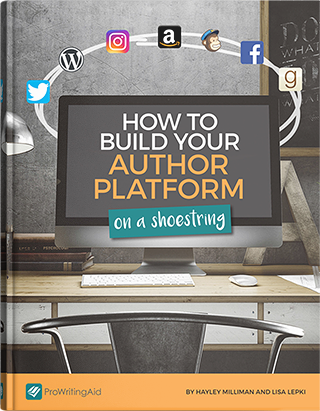
I was first introduced to Skillshare a few years ago when they invited me to publish a bookkeeping class on their site. At that time, I was transitioning from a career in accounting to a career in writing.
At the time of this post, a Skillshare membership costs $15 per month or $99 per year, but they almost always have a two-month free trial option. If you know someone who publishes classes on Skillshare, you can use their affiliate link for your free two months, and if you end up paying for a membership, they will get $10.
Another way to get a Skillshare membership is to publish a class. You won’t get a membership just for publishing a class, but they often have new teacher workshops and if you sign up and complete the workshop, you will receive one year for free. That’s how I ended up getting hooked on their classes!
The platform has grown since I first joined, and while they’ve always had excellent classes for creatives, there are even more artists and writers sharing their knowledge. Here’s a rundown of some of the writing classes I’ve taken.
Creative Nonfiction
Creative Writing: Crafting Personal Essays with Impact by Roxane Gay
The first writing class I took on Skillshare was this class taught by Roxane Gay. I liked the idea of taking a personal experience and turning it into an engaging read rather than a simple retelling of what happened.
The examples Roxane uses are compelling and she covers topics like looking inward, conducting research, writing about your truth, revising your work, and more.
Writing Your Truth: How to Start Writing Your Memoir by Mary Karr
I loved Mary’s sense of humor, and I found her class so helpful that I ended up buying her book on memoir writing: The Art of Memoir. I’m hoping to read some of her memoirs soon too.
Her class covers jumpstarting your memory, truth of memory, using all your senses to engage readers, and developing your voice.
Crafting Memoir: How to Outline Your Own Hero's Journey by Tammy Letherer
I like how Tammy took the Hero’s Journey, a classic story structured developed by Joseph Campbell, and applied it to memoir writing. It’s an approach I never considered, and it seems like it could be a great way to structure a memoir.
Creative Nonfiction: Write Truth with Style by Susan Orlean
As nonfiction is all about writing the truth, this class also focuses on how to do this to engage readers. I loved the research section of this class. Susan has some great tips for interviewing sources and then reporting on the information they share with you.
This class not only covers writing about your own truth but also how to write about other people’s truths. Topics include finding your topic, reporting, organizing your notes, elements of a story, dialogue, quotes, and revising.
Creative Personal Writing: Write the Real You by Ashley C. Ford
This is another class about sharing your own truth through writing. The part I enjoyed the most was the section on pulling memory into the present. This is a great class if you’re pressed for time. Ashley covers writing from memory, reporting on yourself, creating memory, and sharing your work all in only 33 minutes.
Fiction
Writing Fiction: 5 Exercises to Craft a Compelling Plot by Lisa Ko
I liked the way Lisa set up her class. The five exercises to craft a compelling plot are:
- Generate an idea.
- Who is your character?
- When and where.
- What and why.
- How to tell your story.
Lisa also shares examples from her own stories and shares some information on revising.
Writing Suspense: How to Write Stories That Thrill in Any Genre by Benjamin Percy
My favorite parts of this class were the discussions about using reversals and triangulation. A reversal is a plot device where it seems like something is going one way, but then at the last minute, it goes in another direction (usually in a way to create problems for the protagonist). Triangulation involves two characters that have something (like conflict) between them that triangulates the moment.
The Hitchcock Method: How to Add Suspense to Anything You Write by Morgan Lindsay Nelson
I found Lindsay’s discussion about the difference between surprise and suspense helpful. This class uses Alfred Hitchcock examples to dive deep into suspense and surprise in only 20 minutes.
Writing Authentic Fiction: How to Build a Believable Character by Sabaa Tahir
This class is all about understanding your characters and how to make their actions in your story realistic based on your characters’ personalities. With a focus on goal, motivation, and conflict, Sabaa’s lessons include setting the foundation, defining attributes, prepping for the interview, conducting the interview, and writing.
Fast Flash Fiction: Writing Tiny, Beautiful Stories by Kathy Fish
I took this class because I had entered a flash fiction contest, and I had no idea how to write flash fiction. What was I thinking? At 28 minutes, this is an easily digestible class. Kathy covers the basics of flash fiction, writing a compelling opening, overcoming fear, and honoring your experiences.
Erotica Writing Masterclass - Write Erotica for Pleasure and Profit by Kipani Heart
As the title suggests, this class covers writing erotica. Lesson topics include erotica genres, conflict, key turning points, sex scenes, getting published, and marketing. Given that this is a class about erotica, sexual language and slang are used, so if that offends you, this is not the class for you.

Children’s Books
Picture Books I: Write Your Story by Christine Nishiyama
In Picture Books I, Christine discusses the structure of a picture book, coming up with your story idea, plot structure and point of view, character development, writing a good opening, and submitting to publishers.
Picture Books II: Illustrate a Story by Christine Nishiyama
I’ve included this course and the next three, even though they focus on illustration rather than writing, in case you are interested in illustrating your own book rather than working with an illustrator. Christine’s illustration lessons include breaking up your manuscript, storyboarding, making a book dummy, sketches, final drawings, and coloring in Adobe Photoshop.
How to Illustrate a Children’s Picture Book Parts 1, 2, and 3 by Claire Lordon
I grouped these three classes by Claire Lordon together because they seemed like a continuation of the same class to me. In Part 1, Claire covers character design, expressions, silhouettes, and color. Part 2 shows you how to create a storyboard and Claire includes a downloadable storyboard template.
In Part 3, Claire shows you how to create a picture book dummy, an important step in checking your illustrations and page turns.
Blogging
Creating Content that People Love to Read (and Google Loves to Rank) by Raelene Morey
If you have a writer’s blog, this is a great class to brush up on your SEO and learn about the content you should create to attract readers to your site. While this class is focused on content marketing, there are some valuable takeaways for writers like creating strong headlines and nailing your introduction.
Publishing
Brian Jackson has created several excellent how-to classes for writers wanting to publish their own books. I took one of his Microsoft Word courses to remind myself how to use the styles panel in Word. His instructions are clear and he includes on-screen walkthroughs. Even though the course is for Word 2016, the information applies to the current versions of Word.
Brian’s classes range from creating covers using Gimp to uploading your book to Kindle Direct Publishing and everything in between.
Marketing
Digital Marketing for Writers: Grow Your Audience and Author Platform by Jenna Moreci
This is a great marketing class for authors. Jenna’s lessons include defining your target audience, setting up your online presence, establishing your voice, creating a game plan, engaging with your audience, and common mistakes to avoid.
Marketing on a Shoestring: How to Promote Your Business on a Tight Shoestring by Raelene Morey
This course includes several free ways you can promote yourself. While this isn’t geared specifically to writers, these tips apply to writers as well. Raelene discusses testimonials, joining social media groups, commenting on blog posts, writing your own blog posts, and building an email list.
After reading this list of Skillshare classes, you may wonder if I’ve taken all these classes. Yes, I did! Another thing I love about Skillshare is they have an app, so you can listen anywhere. Listening to classes makes doing the dishes and other mundane tasks much more fun. I also adjust the speed of the recording and listen to them at twice the normal speed.
Takeaways
Whether writing fiction or nonfiction, short or long form, Skillshare has something for all the writers out there. With courses falling into categories like Create, Build, and Thrive, you’ll also find many classes to help you market your writing.


